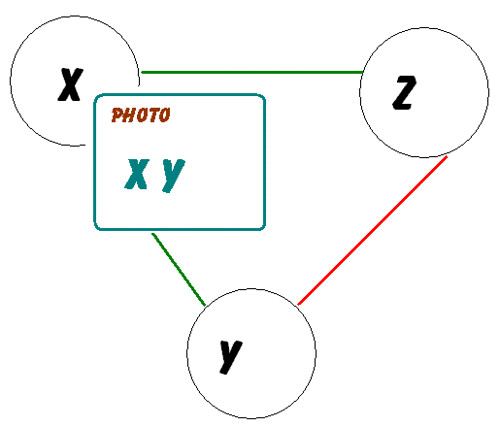In a recent post on his blog, Neil Adam discusses the idea of everyday items being connected to, or at least known about by, the internet. He also considers the fact that the whereabouts of things like clothing can already be tracked over the internet courtesy of technology such as RFID tags. He laments:
This sounds all-well-and-good, until you think of your jeans being tracked through shops, transport networks and all kinds of other places. Privacy no more!
He goes on:
So, if the government of [insert name of paranoid nation-state here] wants to know where you are at all times, all it needs is the code of your jeans and a large network of sensors.
And then comes on to ask:
But what do our students know of all this? How many turn off location on their phones so that pictures they post are not geotagged on Facebook?
 Privacy and tagging are intimately linkedI agree, but here’s an idea. Everyone knows that the best way of getting teenagers to do something is to tell them not to do it. By the same logic, to get them to be more mindful of such privacy concerns as Neil describes, suggest having a school policy to insist they do not turn off the location gizmo. Think about it: schools have a duty of care for their students’ safety, and that includes knowing where they are at any given moment. An insistence that school blazers, say, have an RFID tag sewn into them, plus an array of sensors around the school, would go some way to solving that problem. An even better, and slicker, solution, would be to have a location sensor sown into their clothing or even (shades of 1984) inserted subcutaneously and not removed until they have reached the age of majority (18 in the UK).
Privacy and tagging are intimately linkedI agree, but here’s an idea. Everyone knows that the best way of getting teenagers to do something is to tell them not to do it. By the same logic, to get them to be more mindful of such privacy concerns as Neil describes, suggest having a school policy to insist they do not turn off the location gizmo. Think about it: schools have a duty of care for their students’ safety, and that includes knowing where they are at any given moment. An insistence that school blazers, say, have an RFID tag sewn into them, plus an array of sensors around the school, would go some way to solving that problem. An even better, and slicker, solution, would be to have a location sensor sown into their clothing or even (shades of 1984) inserted subcutaneously and not removed until they have reached the age of majority (18 in the UK).
I realise this is a far-fetched idea, and would never get off the ground in real life, but my point is as follows. Neil is absolutely right to be worried about such matters, but in my opinion the only way – or, at least, one of the most effective ways – to get teens to think about the issue is to pretend to propose, quite seriously, a solution such as the one I’ve just outlined.
To read Neil’s post in full, please see The internet of abandoned security.

